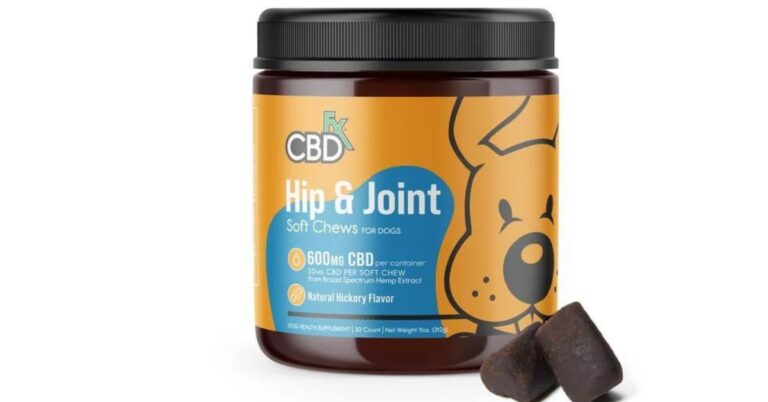How Panchakarma Detoxifies the Body and Mind for Better Health
Panchakarma is an ancient Ayurvedic detoxification treatment that works at multiple levels in order to rebalance and regain health. “Panchakarma” means “five actions,” referring to a series of five therapeutic procedures designed to remove toxins (known as ama) from the body. Panchakarma is a structured and holistic treatment for rejuvenating the body at its deepest cellular levels while also addressing mental and spiritual well-being.
Panchakarma is an ancient Ayurvedic therapy that’s more than a detoxification process. It’s preventive and curative medicine, aiming at the elimination of toxins and correction of the three main energies: Vata, Pitta, and Kapha. According to the philosophy of Ayurveda, an imbalance leads to a variety of diseases.
According to Ayurveda, everyone is born with his or her own Prakriti. Treatment in Panchakarma is individualized, so the Panchakarma in Hyderabad will be less risky, efficient, and beneficial for maintaining health in the long term. This approach is one of the reasons why Panchakarma treatment is so popular as a means to getting in optimal condition.
The Five Core Therapies of Panchakarma
Panchakarma is a group of five major therapies, each intended to eliminate the toxins from a specific area of the body.
1. Vamana (Therapeutic Emesis)
Vamana is the induction of vomiting with the help of herbal emetics. This treatment is mainly for the elimination of toxins that have accumulated in the stomach and respiratory tract, especially in those suffering from an excess of Kapha dosha.
Key Benefits:
- Relieves respiratory congestion and conditions like asthma and bronchitis.
- Enhances digestion and stimulates metabolism.
- Reduces chronic allergic reactions and certain skin conditions.
2. Virechana (Purgation Therapy)
Virechana is a cleansing process that utilizes herbal laxatives to flush out toxins from the liver, gallbladder, and intestines. This therapy is especially effective for balancing the Pitta dosha, which governs metabolism and digestion.
Key Benefits:
- Detoxifies the liver and the gastrointestinal tract.
- Helps manage skin conditions such as acne and eczema.
- Reduces internal heat, inflammation, and conditions related to acidity.
3. Basti (Medicated Enema Therapy)
One of the most important treatments of Panchakarma is Basti, where medicated oils or herbal decoctions are given through an enema. It is one of the best therapies for balancing Vata dosha, which affects movement, nerve impulses, and elimination processes.
Key Benefits
- Relieves chronic constipation and gastrointestinal problems.
- Reduces the symptoms of arthritis and some neurological disorders.
- Strengthened immunity and joint health.
4. Nasya (Nasal Cleansing Therapy)
This treatment brings about the purification of the nasal passages through the administration of herbal oils or powders. This is used with the intention of correcting both Kapha and Pitta doshas and is best utilized for the problems in the head region.
Key Advantages:
- Causes the removal of sinus congestion, migraines, and other headaches.
- Increases mental clarity and emotional balance.
- Improves respiratory health and even the quality of the voice.
5. Raktamokshana or Bloodletting Therapy
Raktamokshana is a specialized treatment that involves removal of impure blood. Methods like leech therapy or controlled venipuncture are used for the removal of toxins from the blood, primarily treating problems caused by the Pitta dosha.
Key Advantages:
- Reduces diseases of the skin, such as psoriasis and eczema.
- Reduces inflammation and cleanses the blood.
- Restores heat disorders with an excess of Pitta dosha.
The Panchakarma Process
Panchakarma is a process that is divided into three stages, each of which plays an important role in detoxification and rejuvenation.
Stage 1: Purva Karma (Preparation)
Before the main detoxification treatments are initiated, the body is prepared to eliminate toxins that have been accumulated over a long period. There are two preparatory treatments used:
- Snehana (Oleation Therapy): This involves the application of medicated oils both internally and externally. The oil penetrates deep into the tissues, loosening toxins and making them easier to expel.
- Swedana (Sudation Therapy): Using herbal steam, this therapy induces sweating, which further mobilizes toxins from the tissues to the skin surface.
Phase 2: Pradhana Karma (Main Therapies)
Applying the five major therapies—Vamana, Virechana, Basti, Nasya, and Raktamokshana—is the core of Panchakarma. Each procedure is tailored to a person’s unique constitution and specific health issues.
- Vamana: After preparatory oleation and sudation, herbal medicines are given to displace Kapha-excessive toxins from the respiratory and gastrointestinal tract.
- Virechana: Targeting the Pitta dosha, this stage uses herbal laxatives after several oleation and sudation therapies to purify the digestive tract.
- Basti: For people with Vata imbalances, medicated enemas cleanse and nourish the colon while normalizing the whole body’s activities.
- Nasya: Through the nostrils, this therapy clears the head region and enables mental clarity and better processing of daily stresses.
- Raktamokshana: This detoxification treatment involves the controlled extraction of a minimal amount of impure blood to reduce inflamed and skin-related disorders.
Stage 3: Paschat Karma (Post-Therapy Care)
Paschat Karma is the recovery phase of the body, after the major therapies are completed. The treatment during this phase is focused on building strength and restoring immunity.
- A light nourishing diet is advised in order to allow the body to heal.
- Certain herbal preparations are used for rebalancing the doshas and maintaining the benefits obtained in the detoxification process.
- Gentle exercises, meditation, and other lifestyle modifications contribute to the overall rejuvenation of both body and mind.
Impact on Long-Term Health
The advantages of Panchakarma are far greater than just its immediate detoxification. It can evoke long-term, effective wellbeing and quality of life when conducted appropriately and in the right hands.
Cellular Cleansing and Rejuvenation
Panchakarma cleanses the body on a cellular level to remove toxins that gradually accumulate over time. In so doing, the therapy promotes revitalized tissues and organs, leading to increased energy and general sense of wellness.
Improved Digestion
The Ayurvedic health system presupposes strong digestive fire, Agni. Panchakarma helps to remove toxins that are accumulated in the gut. This process ensures better nutrient assimilation and less chance of several common digestive disorders such as gas and indigestion.
Mental Clarity and Emotional Stability
The cleansing effects of Panchakarma are not only physical. The therapies have a deep effect on mental and emotional health as well. With reduced stress, anxiety, and insomnia, Panchakarma allows a calm and balanced mind, enabling the individual to better handle the challenges of life.
Improved Immune System
Detoxification results in a stronger immune response. A body free of accumulated impurities is better able to ward off infections and diseases, thus reducing the chances of chronic illnesses.
Prevention of Diseases and Longevity
Regular Panchakarma sessions can act as a preventive measure, keeping chronic health issues at bay. By maintaining doshic balance and promoting overall wellness, Panchakarma contributes to a longer, healthier life.
The Role of the Doshas in Panchakarma
The doshas are the foundation of Ayurvedic medicine. There are three doshas: Vata, Pitta, and Kapha. Each dosha is a unique combination of physical and emotional characteristics:
- Vata: Vata governs movement and communication within the body. It influences functions such as blood circulation, breathing, and nerve impulses. Imbalances in Vata can lead to issues like anxiety, constipation, and joint pain.
- Pitta controls metabolism and transformation. It rules over digestion, body heat, and energy. Too much Pitta may lead to inflammation, skin irritations, and digestive issues.
- Kapha is related to structure and stability. Kapha provides physical strength, immunity, and other functions of lubrication. Mostly an excessive abundance of Kapha occurs as slow digestion, congestion, or increases in body weight.
Conclusion
Panchakarma is a highly age-old practice, offering complete detoxification and rejuvenation. Its five core therapies—Vamana, Virechana, Basti, Nasya, and Raktamokshana—work with each other to cleanse at the cellular level, restore a balance in the doshas, and promote overall wellness. Whether you suffer from specific health conditions or look to improve your long-term vitality, Panchakarma offers a holistic approach to attaining total health.
Always remember that Panchakarma should only be undertaken with the guidance of a qualified Ayurvedic practitioner. Accept the transformative power of Panchakarma and experience the profound benefits of a cleansed body and a calm, revitalized mind.
ALSO READ: Why Self-Detox at Home Is a Bad Idea | Briarwood Detox Center







